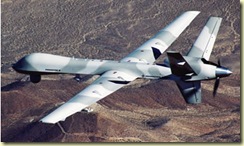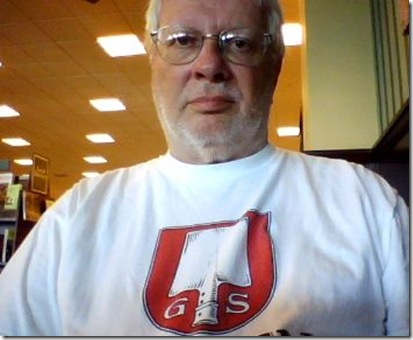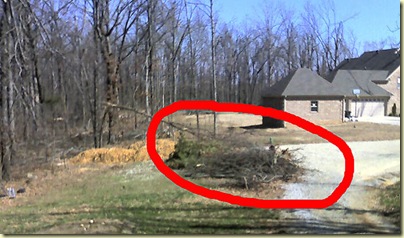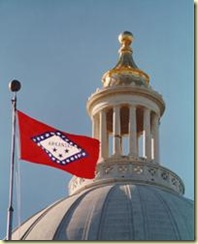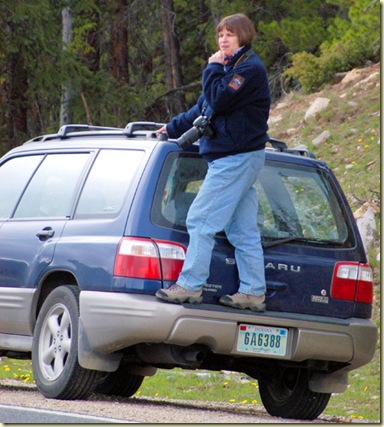Here is a lengthy, but thorough explanation, of why the notion of Anthropogenic (man-made) Global Warming (AGW) is bullshit junk science, being pushed by those who have something to gain from this imagined crisis. It's from www.americanthinker.com:
By Gregory Young
Mathematical Modeling is used throughout our world to help forecast the future in many arenas of life, including economics, biology, medicine, and yes, climate change. Like all modeling, one attempts to study the past through scientific observation, accurately and unbiasedly collect the data, and then fit the data to a dynamic computer model that is meant to predict, to some degree of accuracy, some measure of tomorrow. In this way scientists hope to discover trends that not only document the past, but could forecast the future.
Virtually all climate models are basically mathematical models, built upon a series of mathematical equations. Change just one equation, or the number of variables in an equation, or how they relate to one another, and the results of the model can change dramatically. Unfortunately, unlike many other forms of modeling, climate models have yet to prove their wanted accuracy.
For the most part, the reasons for their ongoing failure have everything to do with climate complexity. The climate is such an extraordinarily difficult dynamic system to be approximated by mathematical equations. There are literally thousands of components, all interacting in ways that we don't fully understand. Added to the cacophony of being terrifically circuitous, and involving reciprocating feedback loops with a multitude of leveraged factors nested within interdependent systems of energy exchange, some of these energy systems are not just confined to earth. Therefore, in changing the profile or weightiness of just one variable, the model's ability to forecast results can shift critically, and indeed, can mistakenly and regularly portend catastrophes.
As Professor Ian Clark, Department of Sciences, University of Ottawa tells it: "If you haven't understood the climate system, if you haven't understood all the components -- the cosmic rays, the solar, the CO2, the water vapor, the clouds, and put it all together -- if you haven't got all that, then your model isn't worth anything." As in most computer models, the adage of "junk in -- junk out" remains true for climate models.
Compounding the Problems of Climate Modeling:
In addition to the difficulties mentioned above, is the late arriving Anthropogenic (man-made) Global Warming (AGW) prejudice that has set the evolution of climate modeling back a few decades. Previously known and accepted climate components have been summarily stripped from the equation -- such as the dominant factors involving the Sun and the importance of water vapor in the atmosphere as the dominant greenhouse gas. This is because in the cause to acquire lucrative AGW-biased government grants, many scientists have opted to blatantly skew their climate models to amplify AGW-favoring evidence and amplify anthropogenic CO2 importance. In this manner, they then qualify to receive funding and ensure publication.
Describing the compounded inaccuracies of these Johnny-come-lately modelers who would rather be funded than scientifically astute, Dr. Tim Ball, a former climate scientist at the University of Winnipeg sardonically clarifies: "The analogy that I use is that my car is not running that well, so I'm going to ignore the engine (which is the sun) and I'm going to ignore the transmission (which is the water vapor) and I'm going to look at one nut on the right rear wheel (which is the Human produced CO2) ... the science is that bad!"
Dr. Balls analogy has never proved clearer than when examining the climate models used by the UN's Intergovernmental Panel on Climate Change (IPCC). As just noted, the inaccuracy of those models cherry-picked by the IPCC revealed that the largest and most robust variables of climate change and their antecedents were intentionally dismissed and dropped from inclusion in their investigations, including the variables of solar activity, water vapor and cloud formation in the atmosphere, major ocean currents, as well as other vital components.
If you're thinking that without due consideration of the known and most weighty variables in the climate system, the forecastable conclusions should prove to be fallacious and wrong, you would be right. Yet, that hasn't stopped the UN's IPCC from driving the propaganda of AGW, emphasizing the wrong deductions while deliberately disregarding the bigger picture altogether.
Ironically, model worthiness and accuracy can be quickly assessed by simply plugging in yesterday's numbers and seeing if the model actually yields results that are aligned with the known history. Yet to date, climate models have failed miserably. Though there is hope for further improvement, there is no current climate model that can, when applied to the documented past, accurately re-forecast the known historical record, much less portend what could be happening to the weather next week, least wise the next century. Climate modeling has yet to rise to a level of sophistication that allows us to accurately predict the future.
Knowing the primitive state of climate modeling, it is at least irresponsible, even not maleficent, to use such flawed methods to intentionally affect global public policy-making. It is morally reprehensible, if not criminal, to promote the panicking of dire climate consequences and extinction scenarios authored by climate models known to be verifiably defective. This tyranny of appearance has yet to be toppled.
Further Undermining Model Accuracies:
Aside from climate models not working, how they are "applied" and "used" in order to affect public opinion offers us insight into yet another scientific infraction. For instance, AGW studies notoriously measure "short-term trends," from which they then attempt to derive long-term forecasts. This is tantamount to predicting whether a building should be built upon a piece of ground by analyzing the topsoil alone, while ignoring the absence of any underlying bedrock. Real risky!
When it comes to climate change, which has been ongoing for at least 4.5 Billion years, measuring short-term trends alone, such as 10-50 years at a time, is absolutely worthless. It's worthless because short-term trends are typically just that, "short-term." They are quick to change. Only in the long-term does the variation of many contiguous short-term trends gradually give way to the more important real climate changes noted in the historical records. From the short-term view point alone, nothing is really revealed except aberrant blips reflecting common statistical variation of the data pool.
Also, depending on what side of the short-term trend we choose to initially measure, the respective forecasts can be 180 degrees out. For example, the last ice-age persisted until 11,400 years ago when the temperatures rose dramatically some 10 degrees Centigrade in just 2-3 years. An accurate forecast depends on what side of the apex of the trend you happen to measure (for a variation on this theme, see René Tomes: Catastrophe Theory), just as one would when trading a stock on Wall Street.
Mind you, all of the climate change that ended the last ice-age happened without man's influence, and it was still a few degrees warmer then, than it is today. Further, no such exemplary temperature-rate-differentials are in evidence currently. Most agree that we are on track to add approximately 1.0 degree Centigrade of warming over the next century. Then again, recent short-term trends of cooling are now documented. The lesson: short-term analysis is generally unreliable to produce meaningful long-term forecasts.
Awkward for warming alarmists, long-term modeling does not reflect AGW. Thus, most of the predictions that account for AGW are derived solely from the short-sightedness of short-term models. Though such narrow and myopic targeting of the timeline gives little to no accurate indication as to what the long-term climate trends will be, it does allow alarmists to spin data to their own favorable conclusive ends through the finding of false-positives. Indeed, depending on where AGWers want to start and stop measuring, the results can be so contrived to be anything they want them to be. But the prejudice of a favored outcome, or an apparent coin-toss, should not be at the helm of climate modeling. This is not the kind of modeling that good science makes.
Corrections to Recent Climate Modeling Undermines the AGW Cause:
Next, let's consider the ongoing corrections made to various climate models due to error in data accumulation, data fabrication and exaggeration and the discovery of outright forgery delightfully explained in this video of Professor Bob Carter of James Cook University in Australia, who demonstrated that on the basis of published studies, the IPCC modeling notions of AGW is not only undermined, but fatally torpedoed.
From Evidence of Modeling Bias to Spinning Propaganda:
Compounding the problems of inaccuracy in climate models is their subsequent and de facto publication, virtually assured if the study is favorable to AGW. Reporting in the journal Energy and Environment, Volume 19, Number 2, March 2008, Evidence for "publication Bias" Concerning Global Warming in Science and Nature by Patrick J. Michaels has found significant evidence for the AGW penchant in his survey of the two premier magazines, namely Science and Nature. Astoundingly, he found that it's more than 99.999% probable that Climate studies' extant forecasts are biased in these two publications. In contrast the AGW party-line believes that there is an equal probability that published findings will raise or lower extant forecasts.
This is akin to believing the MSM is fair, objective and balanced. Michaels rightly warns that such bias "...has considerable implications for the popular perception of global warming science, for the nature of ‘compendia' of climate change research, such as the reports of the United Nations' Intergovernmental Panel on Climate change, and for the political process that uses those compendia as the basis for policy."
And such bias did, does, and will continue to influence world politics. This predicament has been vigorously exposed by Lord Monckton, who previously revealed through consummate analysis that a whole bevy of proven modeling errors yet to be have been corrected, willfully resisted, and pugnaciously ignored by the IPPC continues to this day to prejudice world opinion in favor of AGW.
Monckton specifically found that errors "via 30 equations that computer models used by the UN's climate panel (IPCC) -- [models] which were purposely pre-programmed with such overstated or falsified values for the three variables whose product is ‘climate sensitivity' (temperature increase in response to greenhouse-gas increase) -- resulted in a 500-2000% overstatement of CO2's effect on temperature in the IPCC's latest climate assessment report, published in 2007."
Accordingly, and in total agreement with other published opinions, Lord Monckton stated most recently that there is an "overwhelming weight of evidence that the UN's climate panel, the IPCC, prodigiously exaggerates both the supposed causes and the imagined consequences of anthropogenic ‘global warming;' that too many of the exaggerations can be demonstrated to have been deliberate; and that the IPCC and other official sources have continued to rely even upon those exaggerations that have been definitively demonstrated in the literature to have been deliberate."
Thus, because of (1) complicit distortion and overstatement of climate related data-values, (2) repetitive denial of published corrections of exaggerated IPCC data-modeling, (3) deliberate direct and indirect fabrications of data input through falsified methods of interpolation and extrapolation, (4) willfully and overtly creating data forgeries and conclusions, and (5) other man-made errors introduced into climate warming models, from (6) faulty data collection methods from U.S. National Weather Service pedigree measuring stations to (7) the basic corruption of data analysis itself, all climate modeling to date has been woefully inaccurate, the manipulation of which has become the basis of a deliberate IPPC self-fulfilling prophecy concerning AGW.
Nevertheless, IPCC members remain unrepentant. They openly and truculently refuse to appropriately inculcate the corrected published data into their own conclusions because this would change their conclusions and dispel warming alarmism. It is "priestcraft" in its darkest form. Warming alarmists are acting as skilled magicians that can make a rabbit come out of any hat ... as long as we let them supply the hat!
The Tide is Turning:
But there is a silver lining in the clouds of despair sown by the warming alarmists. Elsewhere, in a painstaking review of the literature accessing the scientific consensus about climate change involving 539 papers published between 2004 and 2007, Schulte and Klaus-Martin in the journal Energy and Environment, published in March 2008, found no actual evidence in any of these papers regarding specific "catastrophic" climate change due to man. Nada. None. Zero.
Additionally, from this most recent study we learn that less than 50% of the papers endorsed any notion of AGW, and only 7% did so explicitly. This means that over half of these studies did not endorse AGW. This is in contrast to just a few years ago when 75% of reviewed published papers between 1995-2003 suggested that the warming of the 50 years previous was likely to have been anthropogenic, or man-made. This reversal is big news.
This study indicates that the tide is changing and the dissent from AGW markedly growing. As AGW climate models are being continually scrutinized and vetted, there appears to be diminishing evidence witnessed en masse in the learned journals to justify the current climate-change alarm.
Though we shall fight on, now the trick is to begin the even harder task of changing the politicians' minds ... politicians who are already salivating for, and grown used to the idea of, a lucrative carbon-tax, and the additional power they will likely inherit with it. Science alone will not likely defeat the rapaciousness of Washington. Any suggestions?
Dr. Gregory Young is a neuroscientist and physicist, a doctoral graduate of the University of Oxford, Oxford, England, whilst previously completing postgraduate work at King's College, University of Aberdeen, Scotland, and having taught graduate-level Statistical Analysis and Mathematical Modeling. He currently chairs a privately funded think-tank engaged in experimental biophysics.














